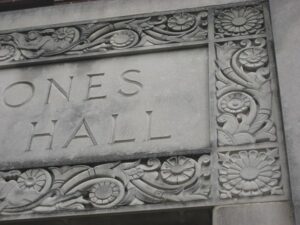The saga of Eastern Gateway Community College continues. You may recall that EGCC, in Steubenville, OH, ran afoul of both the US Department of Education and the Higher Learning Commission for its “Free College Benefit” program, which it offers to AFSCME union members. The Department of Education contends that EGCC funded the online education program largely with Pell Grants, assistance intended for low income students.
In mid-2022, the Department of Education halted Pell Grants to EGCC students and ordered EGCC to stop offering the Free College Benefit program. It also called on the college to create a “teach-out” plan, to ensure that enrolled students had a pathway to complete their education elsewhere. Normally, a teach-out plan is employed when a school closes or otherwise eliminates academic programs.
Eastern Gateway Community College started out as a rural, two-year school outside of Youngstown, OH. In 2007, its 12-month unduplicated headcount was fewer than 2,600 students. By 2017, its unduplicated headcount had more than tripled to about 8,500 students. Just three years later, EGCC had enrolled more than 40,000 students, thanks to the “Free College Benefit” program offered to AFSCME union members and managed by a controversial online program manager (OPM). In 2021, EGCC had a 12-month unduplicated headcount of nearly 60,000 online education students from around the United States.
That explosive growth caught the attention of the State of Ohio, the US Department of Education, and the Higher Learning Commission. The Ohio State Legislature reacted by changing its funding model for community college. The new model reserves state funding primarily for Ohio residents enrolled at an Ohio community college. Schools that enroll a high number of out-of-state students in online education programs will receive only a fraction of the state aid they would receive if they served primarily Ohio residents.
EGCC online education program comes at a high cost
The online education enrollment more than made up for EGCC’s state funding cut. Until the Department of Education withdrew the school’s ability to issue Pell Grants to its students. After investigating the Free College Benefit program, the Education Department determined that EGCC funded the online education program almost exclusively with Pell Grant benefits, using excess grants to pay for students ineligible for federal education grants. For its part, the Higher Learning Commission, which accredits EGCC, placed the school in a probationary status, and gave EGCC two years to correct major deficiencies in its accreditation review.
EGCC sued the Department of Education in federal court and prevailed – sort of. A federal judge agreed with EGCC that the Education Department had violated the school’s right to due process by not allowing them time to respond to ED’s allegations of misuse of federal Pell Grant funds. The judge ordered ED to allow EGCC to have access to federal Pell Grant funding once again.
ED did exactly that; however, it also placed the school in a status called “Heightened Cash Monitoring 2.” This status requires the school to fund federal financial aid awards from its own resources and then apply to the Department of Education for reimbursement.
EGCC has applied for more than $25M in reimbursements since then but has received only $8.5M from ED. The school charges that ED is slow-walking the remaining reimbursement claims, in effect placing the school in danger of financial collapse. As a result, EGCC has suspended the Free College Benefit program for lack of funds. HLC reports in its most recent accreditation update that while EGCC managed to cure certain defects, it has acquired others and remains on probation from HLC.
Online education strategy is sinking the school
I honestly hope the people at WCC are paying attention to what is happening at EGCC. Pursuing online enrollment at the expense of the local population that EGCC was supposed to serve has done the institution no favors. In addition to permanently losing state and federal funding and jeopardizing its accreditation, EGCC is now in a precarious financial position and is spending its remaining cash resources on court proceedings instead of educating students. Additionally, the school has lost the two presidents who led the school down this path in the first place.
How long will it be before the Michigan state legislature wakes up and restricts state funding to schools like WCC that pursue out-of-district and out-of-state students at the expense of the local taxpayers?
Photo Credit: Userpilot , via Flickr



























